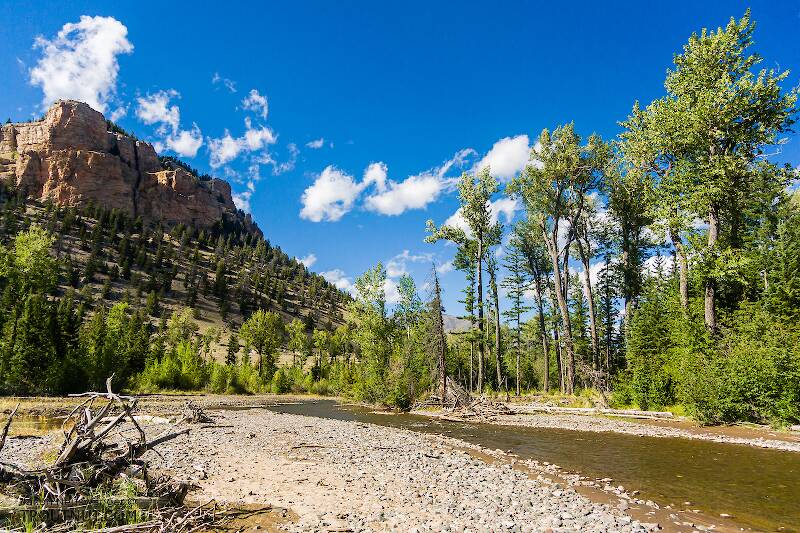
Blue-winged Olives
Baetis
Tiny Baetis mayflies are perhaps the most commonly encountered and imitated by anglers on all American trout streams due to their great abundance, widespread distribution, and trout-friendly emergence habits.

— 4 small yellow spots on frons visible in photos
— Narrow occipital spinule row curves forward (but doesn’t quite meet on stem of ecdysial suture, as it's supposed to in this species)
— Short spinules on anterior margin of front legs
— Short rposterior row of blunt spinules on abdominal tergae, rather than elongated spinules dorsally
I caught several of these mature nymphs in the fishless, tiny headwaters of a creek high in the Wenatchee Mountains.

Mayfly Species Hexagenia rigida (Great Olive-Winged Drakes)
Where & when
According to the Leonards in Mayflies of Michigan Trout Streams, this species is most abundant in lakes and large, warm trout streams. It does not seem common in colder water.In 48 records from GBIF, adults of this species have mostly been collected during June (40%), July (35%), and August (15%).
In 6 records from GBIF, this species has been collected at elevations ranging from 568 to 2657 ft, with an average (median) of 591 ft.
Species Range
Physical description
Most physical descriptions on Troutnut are direct or slightly edited quotes from the original scientific sources describing or updating the species, although there may be errors in copying them to this website. Such descriptions aren't always definitive, because species often turn out to be more variable than the original describers observed. In some cases, only a single specimen was described! However, they are useful starting points.
Male Spinner
Wing length: 16-18 mm
Abdominal tergites largely brown with yellow submedian and lateral blotches; usually a wavy brown lateral stripe on each side of venter, no dark triangles on middle sternites; penes long, almost straight.
Head yellow; vertex suffused with reddish brown. Eye olive brown above; eyes separated by space about equal to one eye diameter. Pronotum pale yellow, lateral stripes wide, purplish black. Mesonota and metanota light reddish brown, the posterior portions yellowish; tips of scutella blackish; pleura light red-brown. Sternum reddish to purplish brown, deepest on posterior of prosternum. Ventral portion of fore coxa deep purplish black; trochanter, femur and tibia reddish brown; tarsus may be reddish brown except base of second joint, or each middle joint may be yellowish basally. Middle and hind legs pale yellow; tarsal joinings and last tarsal joint purplish brown. Wings hyaline; costal margin of fore wing light olive brown; all veins blackish brown. Cross veins of costal margin heavily black; a few nearer the disc may be narrowly margined; in hind wing, several in disc usually margined, forming several small blackish spots. Outer margin of hind wing typically with narrow dark margin, but this may be lacking.
Abdominal tergites mainly brownish; yellowish triangular submedian blotches and smaller blotches next to lateral margin, on each tergite; the yellow areas may be quite bright in color, or more or less obscured by a reddish tinge. Posterior margins usually narrowly pale. Sternites pale yellow; a purplish black blotch in each anterolateral angle, an oblique lateral stripe attached to its posterior end, so that lateral stripes appear to extend “from the central area of one segment, backwards to the middle of the lateral margin of the following segment” (McDunnough). Ends of these stripes usually connected, so that a more or less continuous wavy lateral line is formed. Mid-ventral line deep brown on apical segments; often traces of dark line here on other segments; apical sternites with median dark triangles which do not attain the anterior margin. Forceps brown, second joint yellow. Penes rather long, almost straight (see fig. 84). Tails pale yellow, each joining narrowly purplish brown.
The long straight penes are distinctive.
Start a Discussion of Hexagenia rigida
References
- Caucci, Al and Nastasi, Bob. 2004. Hatches II. The Lyons Press.
- Leonard, Justin W. and Fannie A. Leonard. 1962. Mayflies of Michigan Trout Streams. Cranbrook Institute of Science.
- Needham, James G., Jay R. Traver, and Yin-Chi Hsu. 1935. The Biology of Mayflies. Comstock Publishing Company, Inc.
Mayfly Species Hexagenia rigida (Great Olive-Winged Drakes)
Species Range
Common Names
Resources
- NatureServe
- Integrated Taxonomic Information System
- Global Biodiversity Information Facility
- Described by McDunnough (1924)

